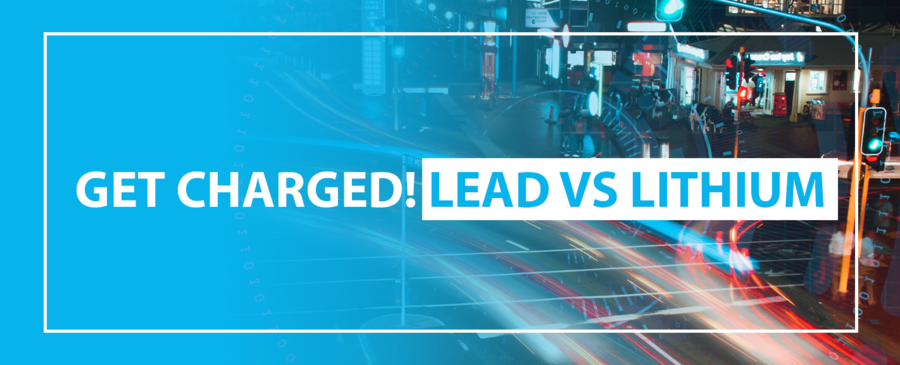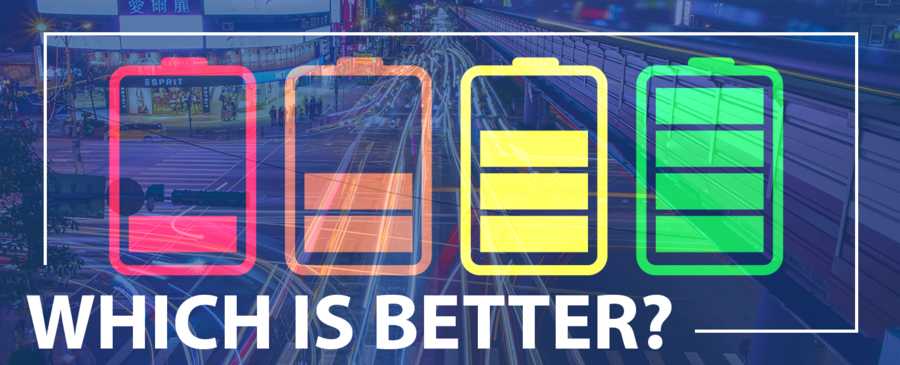{{ quickViewProduct.product_title }}
Stock ID
{{ quickViewProduct.product_stock_number }}
Product Features:
- {{ feature.product_feature_description }}
{{ option.product_option_title }}
{{ value.product_option_value_title }}

Talk of Lithium versus Lead Acid Batteries has attracted the power management industry with great interest. With the long history of Lead Acid Batteries, a comfort level exists. As this industry grows and the focus moves to a smaller footprint, economical solutions, and easier maintenance, Lithium Batteries are rising to the forefront of conversation.
Over the years, Multilink has had opportunities to test different battery technology types in field trials. In 2004, customer product testing with a Lithium Metal Polymer Battery began. Unfortunately, this field trial resulted in issues of instability. However, with companies expressing interest in this possible technology, it has lead to further exploration. Today, Multilink has solutions that successfully allow both Lead Acid or Lithium Batteries to power their products.
What Battery is Best?
It is important to assess the following attributes of batteries when determining the best solution for your project:

Types of Batteries
Lithium-ion refers to several technologies and the battery construction has multiple parts. The electrolyte is lithium-salt in an organic solvent. The negative part of the battery is the anode, which is made up of graphite or carbon. The positive part is called the cathode and is made of various materials such as cobalt, manganese, and nickel. These materials give names to the batteries such as Lithium Cobalt Oxide, Lithium Manganese Oxide, Lithium Nickel Manganese Oxide, and so on.
In general, one of the issues that lithium batteries have faced is thermal stability. Lithium Ferrous or Lithium Iron Phosphate Batteries have overcome these challenges of temperature, short-circuiting and thermal runaway within the batteries, making them safe.
Disadvantages of Lithium
There is a certain comfort level with Lead Acid Batteries since they have been around for ages while Lithium has had a history of issues with safety and recyclability. Lithium is slightly more expensive, but the life expectancy is longer. Lithium Iron Phosphate Batteries are generally heavier than Lithium-ion Batteries. Lithium Ferrous Batteries should not be charged below 0 degrees. To maintain the safety of the Lithium Battery packs, a battery management system is required to be built into the battery pack.
Depth of Discharge
Lithium Batteries boast a great depth of discharge. They can be discharged at 100% without damaging the pack. This is not an option with Lead Acid Batteries. Typically, the lithium battery can be discharged up to 10,000 cycles when limiting the discharge to 50%, lasting 10-15 years. Regardless of the load placed on the batteries, the voltage has a relatively flat and consistent current draw.
To realize the maximum life expectancy of the Lithium battery, a dedicated charger is required, however, this charge does not require charging to 100%. A resting-state is established once the battery has fully charged. Battery chargers that are designed for Lead Acid Batteries can potentially damage Lithium Batteries, so it is important to follow specifications for your battery.
Discharge Cycles
Compared to Lead Acid Batteries, the Lithium “round trip” efficiency is very high. This is the amount of energy in wattage needed to discharge the battery versus the amount of energy in wattage needed to charge it back up to the starting state. Lithium is 96% or more efficient depending on the manufacturer. A Lead Acid Battery has a life expectancy of 5 years while the Lithium Battery falls between 10-15 years.
Self-Discharge
Lead Acid Batteries have a self-discharge of about 5% a week and deplete themselves while sitting on a shelf causing them to require a maintenance charge when placed in storage. On the other hand, Lithium Batteries have a very low self-discharge rate of less than 1%. This allows for a longer shelf life without necessary maintenance.

Efficiency
Battery efficiency in Lithium is also expressed in its lower losses during charging and discharging. It does not heat during charging or discharging which reduces the wasted energy. The charging efficiency is approximately 99%. Temperatures are monitored during this cycle. Once fully charged, Lithium Batteries do not need a float or trickle charge to offset the internal self-discharging of the battery.
Proper disposal of batteries can be a challenge. Lead Batteries will need to be replaced more often than Lithium and while there are many facilities established for recycling, they are heavy to move. The Lithium Batteries last twice as long so there is less movement necessary. In recent years, Lithium recycling battery centers have opened, and more are on the way.
Maintenance
There is very little maintenance on a lithium battery that is required. As opposed to Lead Acid Batteries that require terminal cleanings and that the battery conductance impedance be measured and matched. They also need to be rotated in the string to ensure even heating. These are all steps that are not necessary with the Lithium Battery. The Battery Maintenance System (BMS) that comes with the Lithium Battery provides the assurance of monitoring the cells.
Accommodating both Lead Acid and Lithium Battery options has been a focus for Multilink over the last several years. With this in mind, we have designed all our power products to allow for either option. See the list of products below for more information.
Telecom Power Solutions
Standby Power Supplies
Non-Standby Power Supply
Remote Power Manager
CATV Inverter
Sky Power
DOT Power Solutions
Line-Interactive
Double Conversion
Remote Power Manager
Status Monitoring
Transfer Switches
Battery Monitoring
Back to Multilog